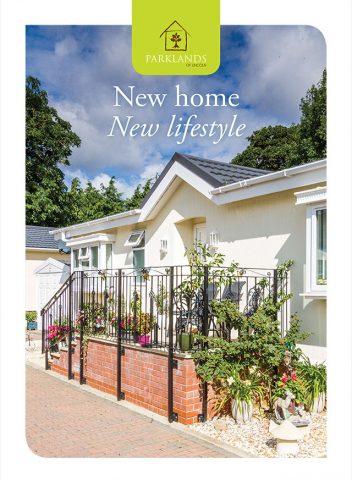There are a wide range of park home models and developments to suit different purposes, including leisure and retirement. Retirement park home living has become an increasingly popular concept over the last 2 decades. These types of park home are often placed on purpose-built retirement development plots. The types of location vary, but can be chosen for their proximity to amenities while also offering a semi-rural environment. This offers convenience to essential services whilst avoiding the bustle of busier locations. The community feel and independent living of a retirement village is often a key attraction for buyers. In this guide, we’re looking at exactly what a retirement park home is so that you can make an informed decision on whether it’s the right lifestyle choice for your retirement.
What are park homes?
Park homes on retirement developments are typically for those over 50 who are looking for an affordable and low-maintenance place to live. The homes are distinctive as they’re elevated from the ground and function as detached bungalows by design.
Not everyone can buy a park home on a retirement development. So, just to be clear, the park homes on retirement developments are typically designed for people for 50 years and older. Rules and criteria vary depending on the development and it’s important to get clarification wherever you enquire.
Perhaps the easiest way to explain what is a park home? Is to unravel the common misconceptions.
Retirement Park homes are (usually) not second homes
This can be a common misconception. They are in fact a residential property, purchased as a primary residence for retirement. Under the Mobile Homes Act 1983 they cannot be used as a second home. It is strongly advised that you seek the licence conditions for residency at any development that you enquire with. A 12-month residency licence may still require that your park home is not your primary residency, and you may be required to have an additional home with a status as your primary address.
They’re rarely moved
Despite their legal and technical classification of a ‘mobile home’, park homes are rarely relocated once in situ. So, if you’re hoping to live out your retirement on the move and enjoy a change of scene, a caravan might be a more suitable option.
You’ll own the home, but not the land
You will own the building, but not the land. So, this is something to bear in mind. You will likely have a pitch fee to pay to cover the cost of the plot and maintenance of the grounds.
You can design your own home
There are not many affordable ways to design your own property, but a park home offers exactly that. With some sites, there is a favourable arrangement for you to choose your manufacturer and get a bespoke design, covering everything from carpet and wallpaper to fixtures and fittings. That means you can buy a home designed exactly how you want it, from the moment you move in.
They can’t be bought with a mortgage
Park homes cannot be bought with a mortgage. However, there are third party finance providers who can help buyers spread the upfront cost of buying a park home. Commonly, buyers who are retired have paid the mortgage on their existing house and use some of this capital to downsize and release the remaining equity to free up their finances for their retirement.
You can part-exchange
There is the possibility to part-exchange your current home for a new park home. Schemes like this have helped many retirees move into a park home much faster while avoiding the hassle of dealing with estate agents and buyers.
We hope these clarifications have given you a better idea of what a park home is and whether it’s the dreamy retirement living you’re looking for. Are you sold on the idea or interested to find out more? Come and explore the new park homes for sale at the Parkland Homes site in beautiful Lincolnshire.




